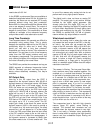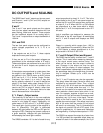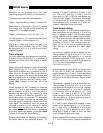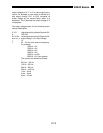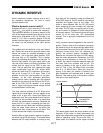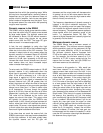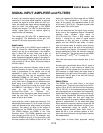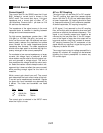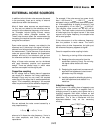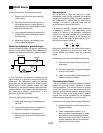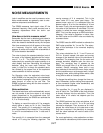
3-20
SR850 Basics
measurements in the vicinity of the notch frequen-
cies. These filters have a finite range of attenua-
tion, generally 10 Hz or so. Thus, if the lock-in is
making measurements at 70 Hz, do not use the
60 Hz notch filter! The signal will be attenuated
and the measurement will be in error. When meas-
uring phase shifts, these filters can affect phase
measurements up to an octave away.
Anti-aliasing filter
After all of the signal filtering and amplification,
there is an anti-aliasing filter. This filter is required
by the signal digitization process. According to the
Nyquist criterion, signals must be sampled at a fre-
quency at least twice the highest signal frequency.
In this case, the highest signal frequency is
100 kHz and the sampling frequency is 256 kHz
so things are ok. However, no signals above 128
kHz can be allowed to reach the A/D converter.
These signals would violate the Nyquist criterion
and be undersampled. The result of this under-
sampling is to make these higher frequency sig-
nals appear as lower frequencies in the digital
data stream. Thus a signal at 175 kHz would
appear below 100 kHz in the digital data stream
and be detectable by the digital PSD. This would
be a problem.
To avoid this undersampling, the analog signal is
filtered to remove any signals above 154 kHz
(when sampling at 256 kHz, signals above
154 kHz will appear below 102 kHz). This filter has
a flat pass band from DC to 102 kHz so as not to
affect measurements in the operating range of the
lock-in. The filter rolls off from 102 kHz to 154 kHz
and achieves an attenuation above 154 kHz of at
least 100 dB. Amplitude variations and phase
shifts due to this filter are calibrated out at the fac-
tory and do not affect measurements. This filter is
transparent to the user.
Input Impedance
The input impedance of the SR850 is 10 MΩ. If a
higher input impedance is desired, then the SR550
remote preamplifier must be used. The SR550 has
an input impedance of 100 MΩ and is AC coupled
from 1 Hz to 100 kHz.



